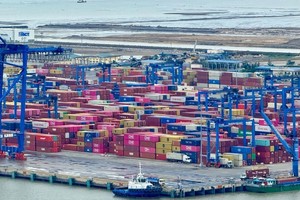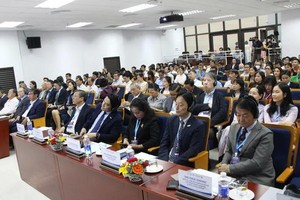)
It includes the Government's complementary project on socio-economic development in 2025, which targets a growth rate of at least 8 percent.
This is a challenging target. At a conference in Hanoi on February 6, looking at final preparations for the 15th NA’s 9th extraordinary session, Prime Minister Pham Minh Chinh emphasized that among the targets, the most difficult task is the growth goal.
In fact, during the 2016-2020 period, Vietnam's economy did not achieve a growth rate of 8 percent in any year. In the past five years, Vietnam's economy reached a growth rate of 8.02 percent in 2022, but this was from a relatively low base due to the prolonged outbreak of Covid-19 in 2021. In the third quarter of 2021, the growth rate even dropped significantly (-6.17 percent).
Meanwhile, the Vietnamese economy demonstrated remarkable resilience in 2024 and was estimated to achieve a growth rate of 7.09 percent. It requires great efforts to achieve a growth rate of 8 percent and above on a high growth base, in the context that the world economy still faces many challenges and the country’s economy remains weak.
However, this is not an unrealistic or baseless goal. Conferences between the Government and 63 provinces and centrally-run cities have been held to reach an agreement on setting growth targets for all localities.
According to Resolution No. 25/NQ-CP dated February 5, 2025, on the growth targets for sectors, industries, and localities set by the Government, 17 localities have been assigned to achieve double-digit growth rates. It required leaders of provinces and cities to try their utmost to achieve these high goals.
The Government has a responsibility to support localities to achieve growth targets and help them meet their goals, create strong driving forces and provide an institutional space for localities to effectively promote their available potential.
The role of the Party Central Committee is also very important to ensure that there is no violation of the law due to competition in achieving the growth target between localities and the smooth and coordinated cooperation among provinces and cities in the economic region. It helps maximize the strengths of each locality and the effectiveness of their connections. When necessary, the Government should provide guarantees to allow localities to borrow additional funds to invest in important projects.
























